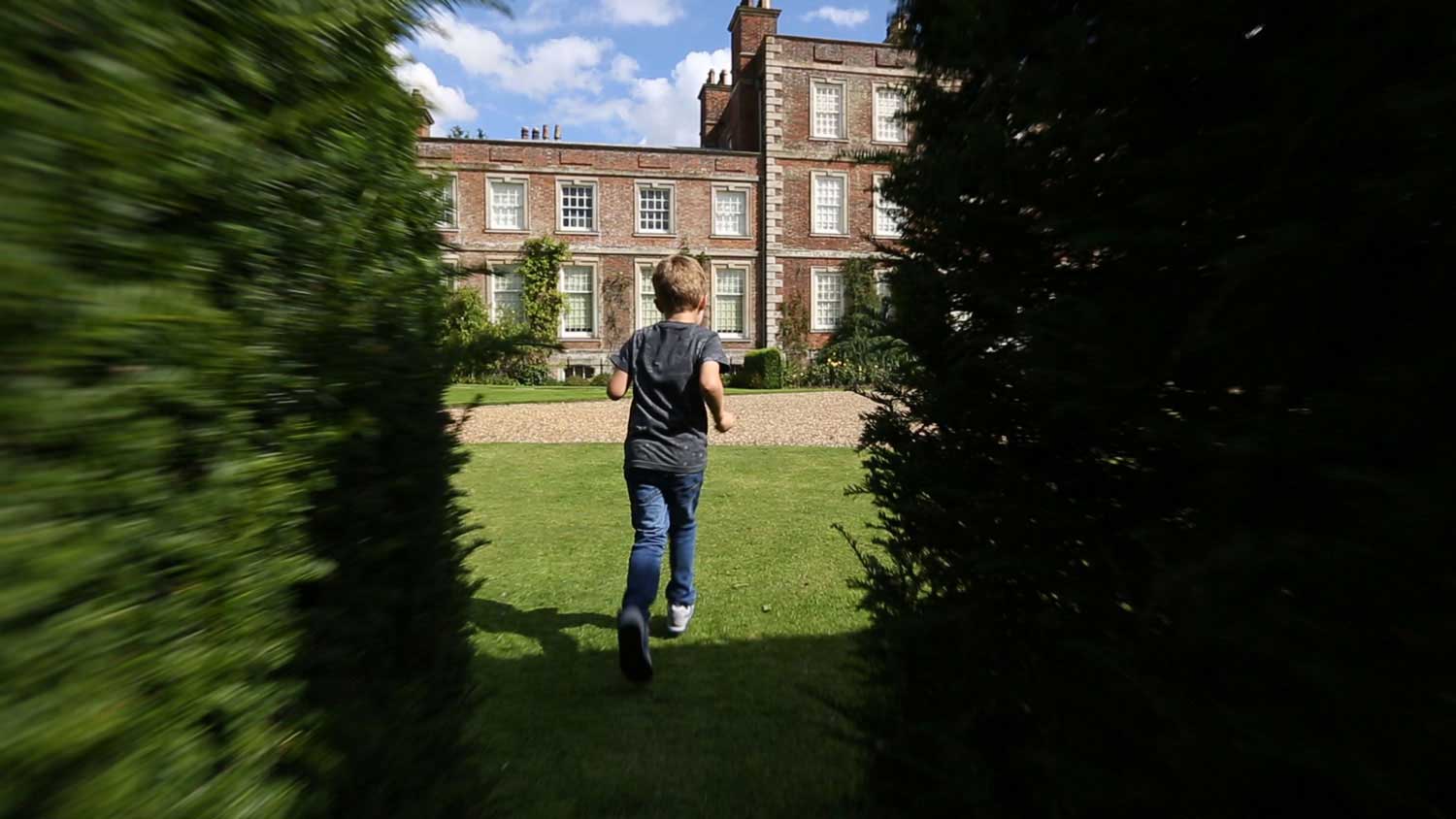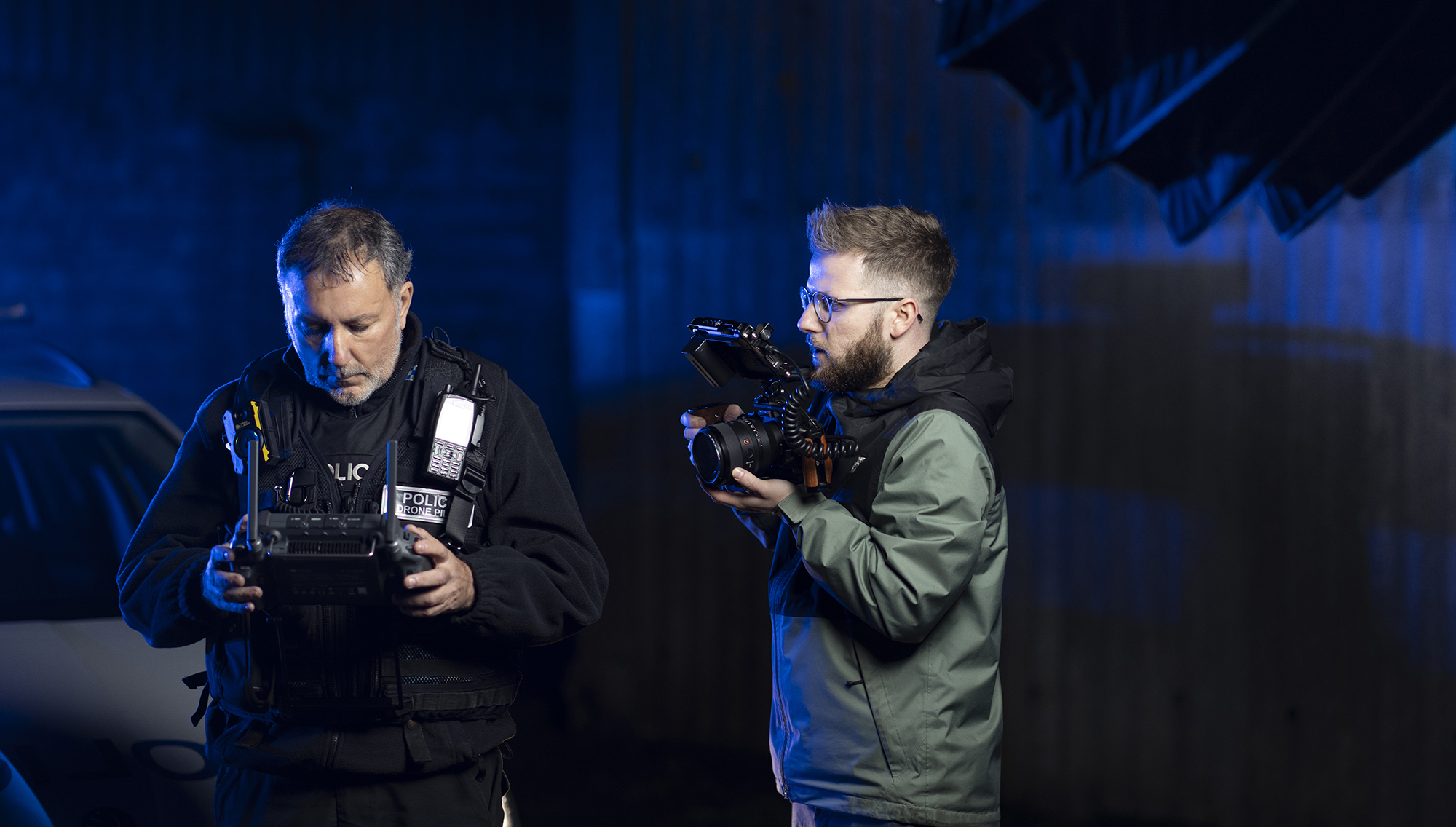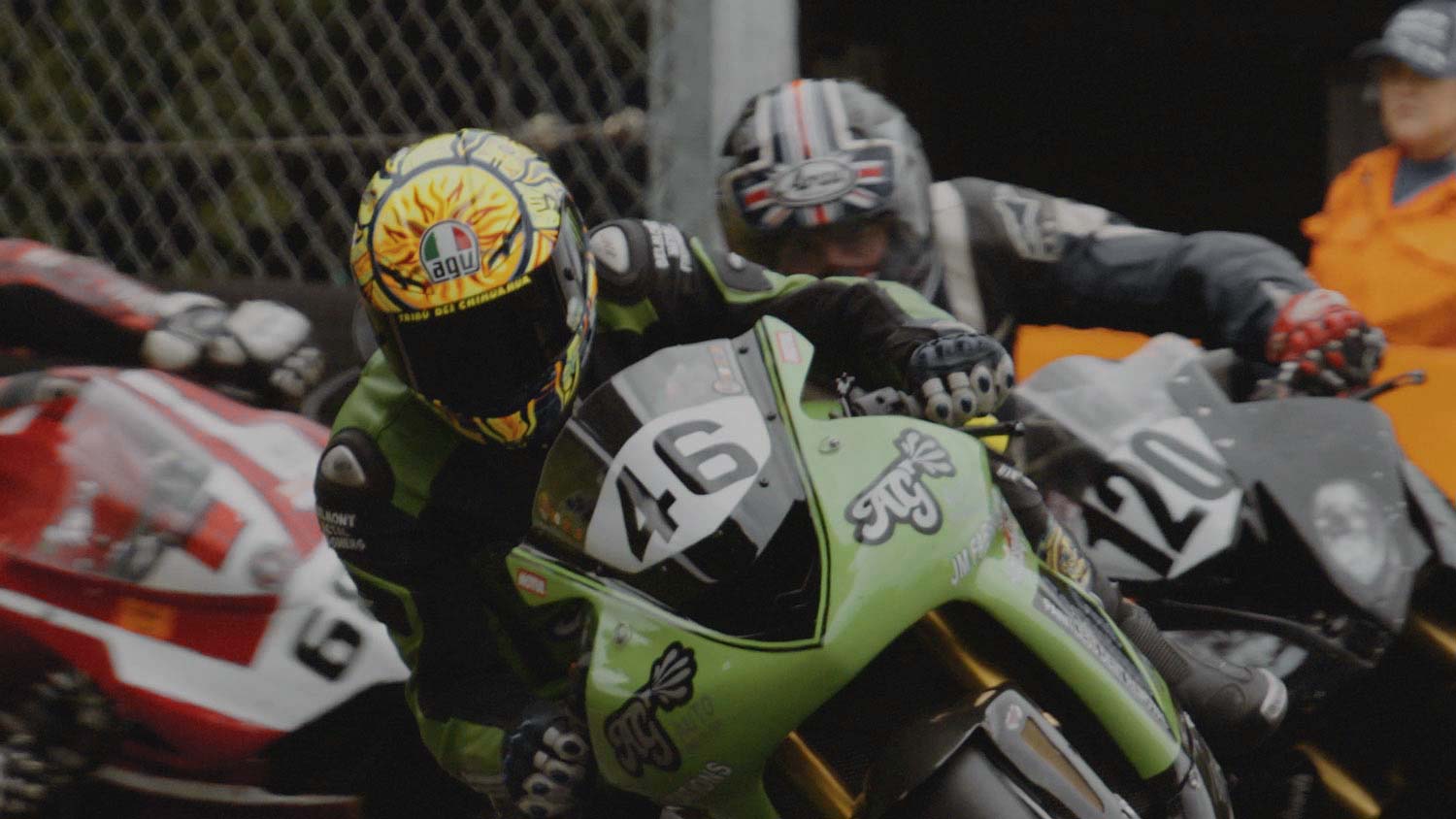In cinema we are used to the camera moving freely through a scene whether it’s the camera acting as Jack Nicholson’s point of view as he searches the Overlook Hotel’s maze or the complex and much feted Dunkirk sequence in Atonement. Bringing this type of stabilised movement to more modest productions however was, until recently, an unfeasible prospect with the budgets that most small scale productions have to work with.
With the advent of new technology, motion-stabilised camera rigs or ‘gimbals’ are now one of the most popular modern tools filmmakers use today. They allow a whole range of smooth camera movement to be added to shots in any production, instantly increasing the production values of a film and allowing a more loose and free shooting style. In short, they open new creative avenues and new possibilities in storytelling.

A stabilised shot used to great effect to emerge from the gardens and reveal the grand entrance to Gunby Hall.
A gimbal works to keep a camera steady across 3-axis’. During moving shots, this allows the camera to seemingly glide effortlessly. It works using small electric motors constantly and dynamically, working to keep the camera from shaking and enabling it to maintain the required direction. Gimbals are infinitely adjustable to allow the operators to create panning and tilting shots and even roll the camera if desired with the camera responding in a smooth and natural way or a fast and loose manner as desired.
They are an amazing tool and can help to create some stunning visuals, however they have to be used with consideration to get the best from them.

In this choreographed scene, we move with the waiter as he walks out to serve the customer.
So why use a gimbal?
Like every tool at a filmmakers disposal, before using them you have to ask the question, how does this help us tell our story effectively? How does the movement help to communicate the meaning you wish to convey? There is a potential with a gimbal is to overuse it or to use it in shots where it is unnecessary, thus potentially creating unwanted meaning. Here are some common reasons though why you may wish to use a gimbal in a production:
01. To follow someone through an environment.
02. To emphasise emotion or direct attention by moving closer or further away from a subject.
03. To showcase architecture and facilities by gliding a camera through a space to showcase it. The continuous shot and lack of cuts can give the viewer more of an idea of orientation and allow the viewer to feel as if they have seen the whole picture because of the lack of edits to transport us around a location.
04. To take the audience on a journey.
05. To reveal something about a character or environment by moving the camera to change perspective and reveal something or someone in that space.
06. To disorientate. Fast gimbal movement in many directions can create disorientation as it feels the camera or character doesn’t know where to look or where to go.
07. To change perspective.
08. To create a point of view. A gimbal can be used to create point of view shots where it seems that the camera is they ‘eyes’ of the character? (Again, Stanley Kubrick’s The Shining is emblematic of this use)

Capturing a sense of play and exploration, we move with the actor as he ‘storms’ the ruins of Bolingbroke Castle.
At Electric Egg the narrative in any film is our paramount concern and everything must service that story – our client’s story. Whilst tools like a gimbal can be very powerful and effective they must be used for a reason.





